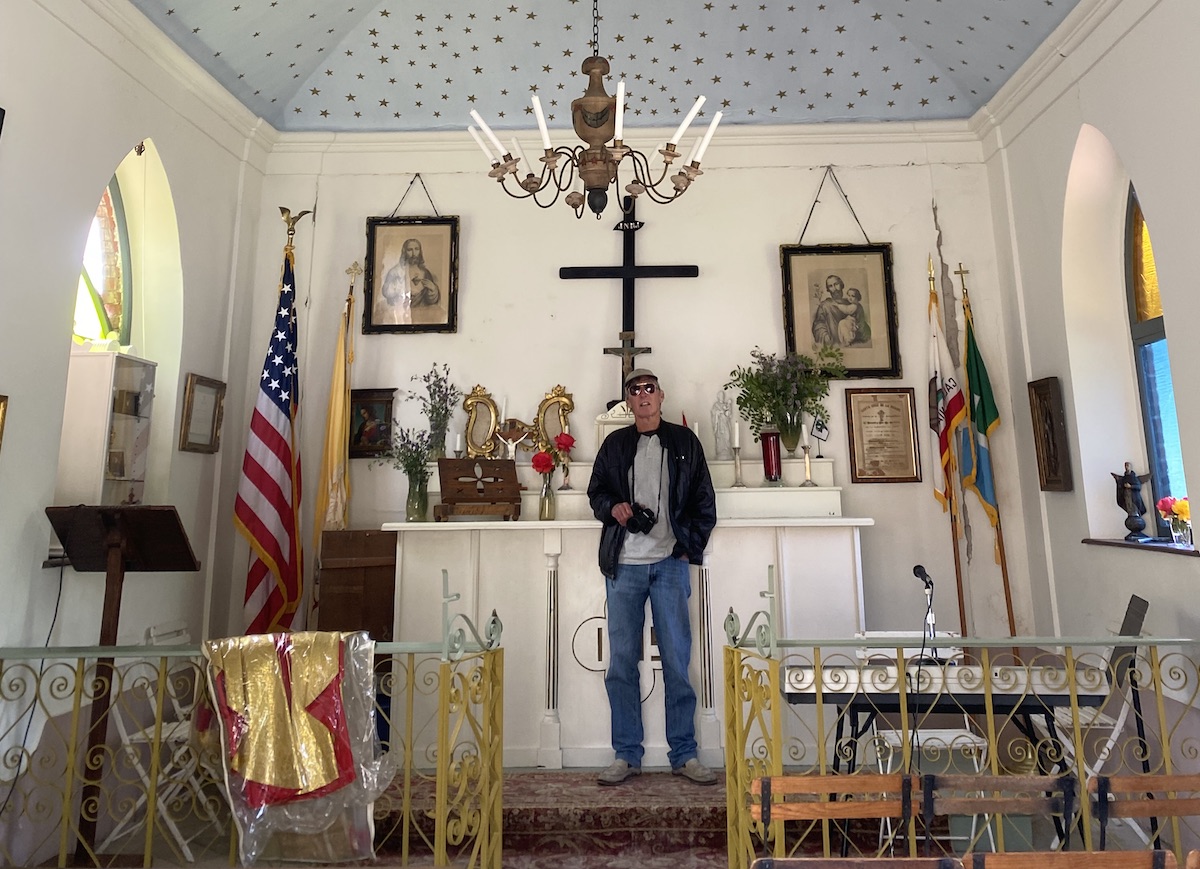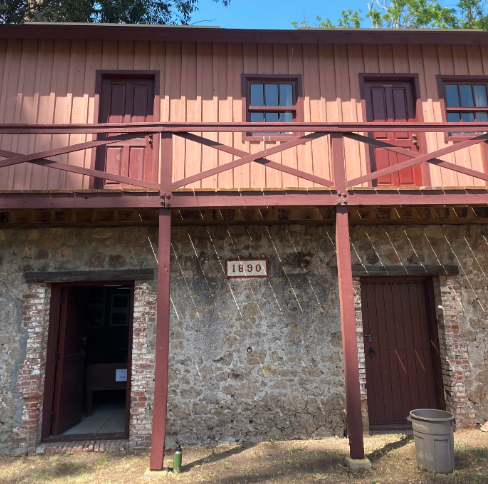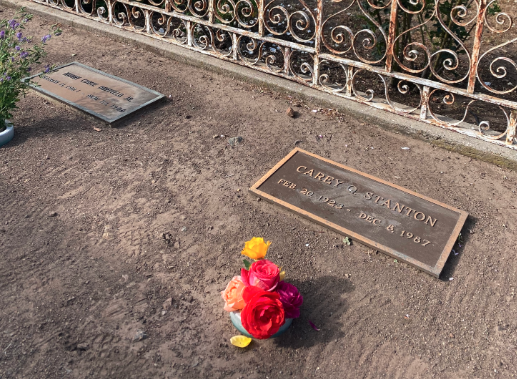Full Belly Files : Walking Through Wine History
Trips to Santa Cruz Island and the Santa Maria Valley

This edition of Full Belly Files was originally emailed to subscribers on May 6, 2022. To receive Matt Kettmann’s food newsletter in your inbox each Friday, sign up at independent.com/newsletters.
One of the biggest attractions to wine for me is how it can provide a direct and visceral tie to the history of a landscape, whether you’re exploring the vineyard rows of a particular property or trying to understand the past of a wider region. These lessons can go way back in time — thousands of years in places like Armenia and Greece — although California’s viticultural ties go back a mere 200 or so years, when the Spanish imported wine grapes in the late 1700s.
More common are vineyards that span back 50 years to a century or so, and these — or at least their remnants and memories — are relatively widespread in the Golden State, from way down in San Diego and Riverside counties north to Lodi and Napa and Mendocino. But I think that there’s even plenty to learn about much more recent historical periods as well when looking at vines and wines, such as what happened during the financial tumult of the late 2000s or how business strategies shift to adapt to emerging trends and climate realities right now.
Over the last week, I took two trips that tugged on these history strings.
SANTA CRUZ ISLAND MASS

This past Monday and Tuesday, I joined the Santa Cruz Island Foundation as a volunteer to help set up the May 3 mass that the nonprofit hosts at the island’s old chapel — built in 1891 — to celebrate the Feast of the Holy Cross, an annual tradition that goes back at least 50 years, although services have been a regular occurrence there since 1893. It was my second time in attendance — the first was a decade ago, when I met a young Peter Stolpman on the boat ride out — but this was my introduction to working as a volunteer.

We arrived on Monday morning, settled into our spartan rooms at the UC-run field station, and got to work, moving equipment from the cantina to the chapel, and tables and benches from the old brick winery building to the grounds outside both the cantina and the chapel. The whole time, we were crisscrossing the island’s central valley, which was home to one of the largest vineyards in California at the turn of the 19th century. That impact is still apparent: Zinfandel vines cling to the fences around the chapel, scraggly stands of ancient vines climb through sage scrub and into willow trees here and there, and the landscape itself still shows signs of vineyard rows, especially when you catch it at the right elevation and light.

I’ve written about these connections multiple times, particularly how Geoff Rusack and Alison Wrigley Rusack used the island’s zinfandel vines to establish a vineyard on Catalina Island. I covered that for the New York Times here and again for the Independent here. I interviewed Frederic Caire Chiles, descendant of onetime island owner Justinian Caire, when he wrote a book about that history in 2011, and again when he did a book about the entire Channel Islands in 2015. I also included Santa Cruz Island’s wine history when I did a deeper dive into Santa Barbara’s entire wine history here, which also became an introductory chapter in my book.

Aside from the sacramental variety and the handful of bottles on display in the cantina museum, wine is not a big part of the mass gathering. But I did bring a mixed case to share with volunteers over dinner and at the campfire on Monday night, including one of the Rusack family’s “Boundless” bottlings of mission grapes that were also originally sourced from the island before being grown in Ballard Canyon.

But the whole affair was soaked in history, from Lucy Walsh singing “Desperado” just like her dad, Joe Walsh of the Eagles, has done for decades (he’s prepping for a tour and couldn’t make it), to the memories that everyone shared of island legends like Carey Stanton. And there were plenty of living legends in attendance as well, like mastermind Marla Daily of the Santa Cruz Island Foundation; Lyndal Laughrin, longtime director of the Santa Cruz Island Natural Reserve; and photographer extraordinaire Bill Dewey. It was a pretty magical 36 hours, and I look forward, as always, to my next Channel Islands trip.
SANTA MARIA VALLEY WITH JAMES ONTIVEROS

A few days before that, I was getting another history treatment up in the Santa Maria Valley from ninth-generation descendant James Ontiveros, one of the hardest-working cowboy/vintners anywhere. He was showing me around the property where he grew up but also pointing north toward Bien Nacido Vineyard just across the valley, where his family settled in 1855. That’s where the Ontiveros Adobe still sits today.
Ontiveros uniquely combines a personal history with a focus on both small-batch, high-quality wine — which he bottles as Native 9, Rancho Vinedo, and Ranchos de Ontiveros — and massive vineyards that are quickly becoming integral pieces of the West Coast wine business. With Matt Turrentine, Ontiveros runs Grapevine Capital Partners, which is buying, planting, and redeveloping vineyards across California and Oregon, particularly in Paso Robles and Santa Barbara County. One of their aims as grape growers that sell to big wineries is to elevate quality while still producing quantity, and that is already improving wines in that popular $15 to $25 range.
That afternoon’s surprise was that Grapevine recently purchased the historic Nielson Vineyard — Santa Barbara County’s first commercial grapevines of the modern era, planted in 1964 — as well as the Byron Winery facility, which came with the deal. They’re still figuring out what to do with that behemoth facility, which isn’t being used at all right now, but they are already at work replanting much of Nielson.
Ontiveros is a wealth of fascinating information, whether of the region’s lore, his cowboy days, or his outlook on the future challenges for the wine industry. I’m hoping he’ll agree to be a cover story one day.
Hungry Planet Preview

The plant-based meat company Hungry Planet is headquartered in Santa Barbara, and I am interviewing the woman in charge next week. In the meantime, they dropped off a few “meat” products to try: “pork” gyoza, crispy and fried “chicken” patties, Italian “sausage” crumble, and grilled “chicken” strips. They’ve all been tasty, particularly the crispy patty that I made into sliders. And I made a salad with the strips, which is pictured here. A longer article to come soon!
Support the Santa Barbara Independent through a long-term or a single contribution.




You must be logged in to post a comment.